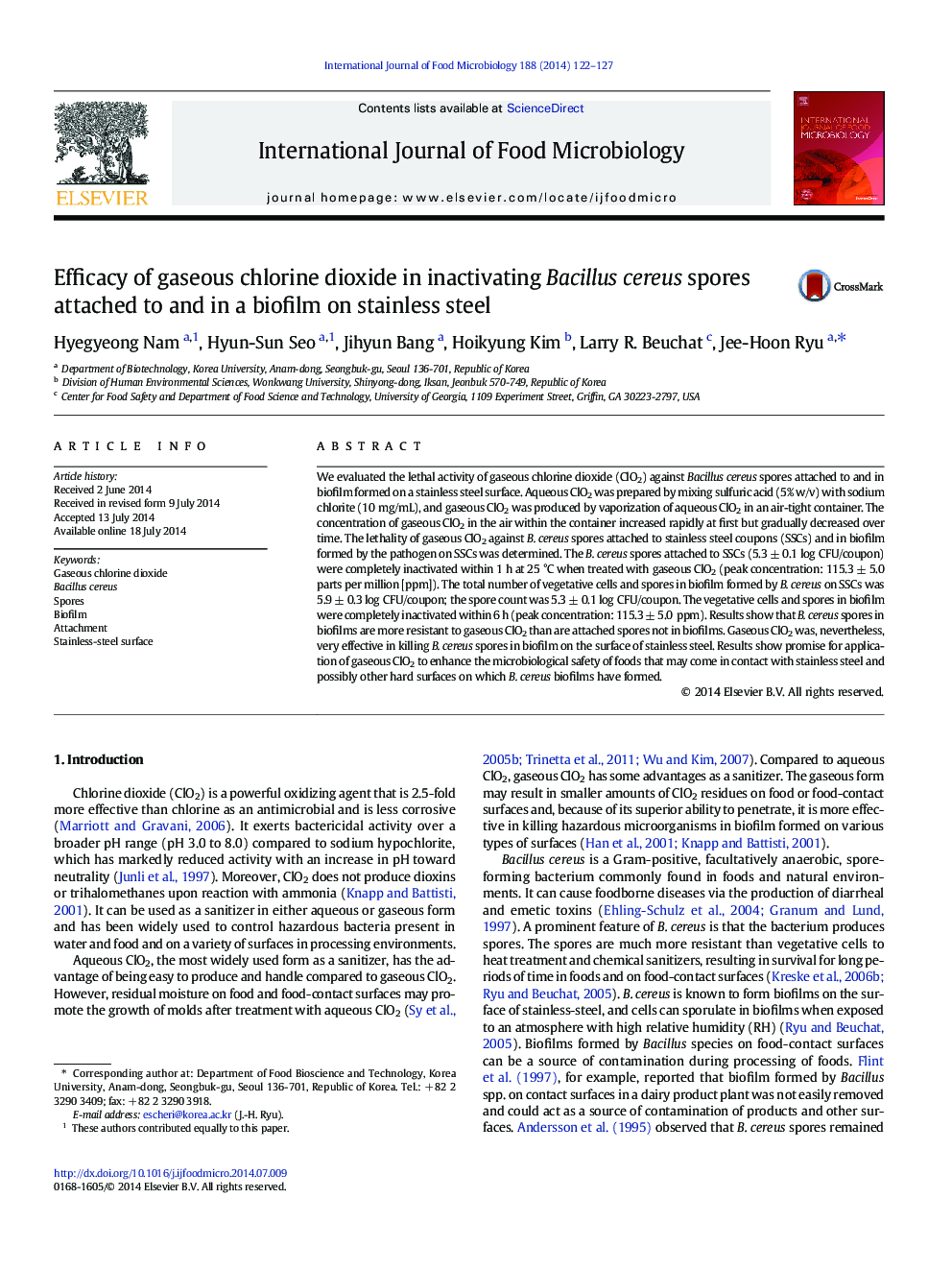| Article ID | Journal | Published Year | Pages | File Type |
|---|---|---|---|---|
| 4366829 | International Journal of Food Microbiology | 2014 | 6 Pages |
Abstract
We evaluated the lethal activity of gaseous chlorine dioxide (ClO2) against Bacillus cereus spores attached to and in biofilm formed on a stainless steel surface. Aqueous ClO2 was prepared by mixing sulfuric acid (5% w/v) with sodium chlorite (10 mg/mL), and gaseous ClO2 was produced by vaporization of aqueous ClO2 in an air-tight container. The concentration of gaseous ClO2 in the air within the container increased rapidly at first but gradually decreased over time. The lethality of gaseous ClO2 against B. cereus spores attached to stainless steel coupons (SSCs) and in biofilm formed by the pathogen on SSCs was determined. The B. cereus spores attached to SSCs (5.3 ± 0.1 log CFU/coupon) were completely inactivated within 1 h at 25 °C when treated with gaseous ClO2 (peak concentration: 115.3 ± 5.0 parts per million [ppm]). The total number of vegetative cells and spores in biofilm formed by B. cereus on SSCs was 5.9 ± 0.3 log CFU/coupon; the spore count was 5.3 ± 0.1 log CFU/coupon. The vegetative cells and spores in biofilm were completely inactivated within 6 h (peak concentration: 115.3 ± 5.0 ppm). Results show that B. cereus spores in biofilms are more resistant to gaseous ClO2 than are attached spores not in biofilms. Gaseous ClO2 was, nevertheless, very effective in killing B. cereus spores in biofilm on the surface of stainless steel. Results show promise for application of gaseous ClO2 to enhance the microbiological safety of foods that may come in contact with stainless steel and possibly other hard surfaces on which B. cereus biofilms have formed.
Related Topics
Life Sciences
Agricultural and Biological Sciences
Food Science
Authors
Hyegyeong Nam, Hyun-Sun Seo, Jihyun Bang, Hoikyung Kim, Larry R. Beuchat, Jee-Hoon Ryu,
